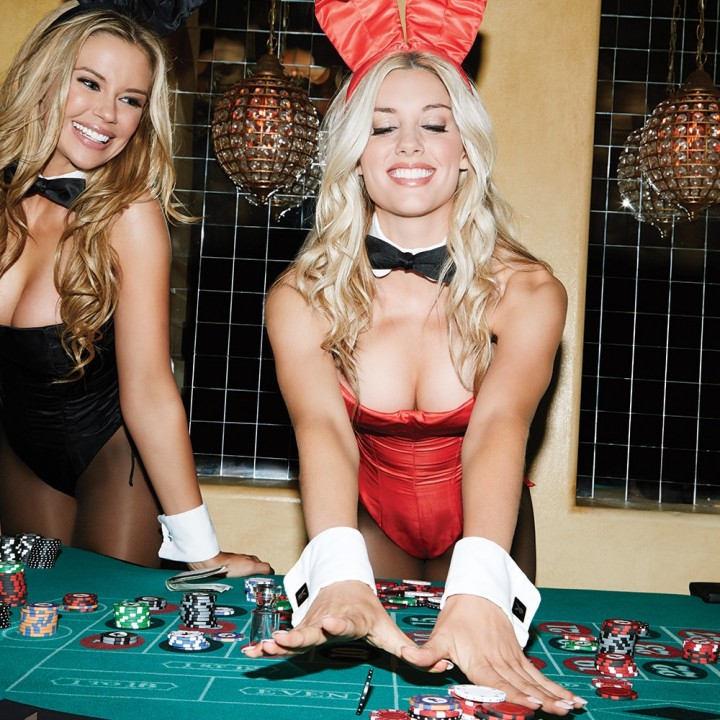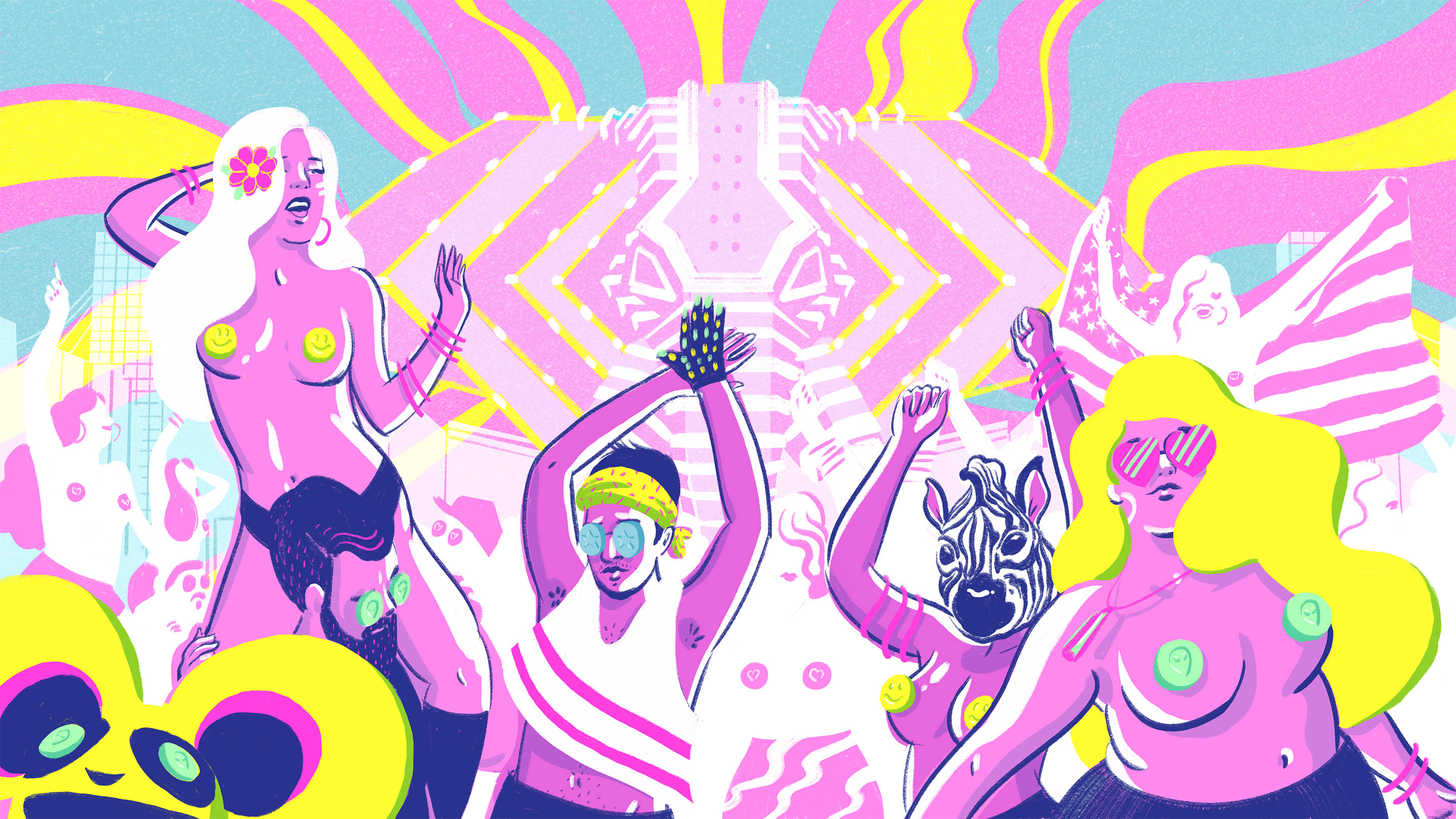
Molly's Lethal Rebirth
MDMA is stronger and more abundant than ever. And unless things change, the death count will rise
It’s Labor Day 2018 on Randalls Island, and a swarm of young Americans—a giggling day-glo batallion in unicorn horns and angel wings—tumble from the school bus that brought them here from Brooklyn.
"They’re goddamn half-naked,” says Gee, our 60-year-old bus driver, eyes popping. “They’re all on drugs—they hide it in their bra, if they got one!”
I’m here to investigate a cultural shift that is underway as more young Americans enter the dance-drug culture. MDMA, which, by some harm reductionists’ estimates, is used by about 80 percent of attendees at festivals like this one, has gone primetime. Its availability and potency skyrocketed after wholesale prices plunged in the last few years in the EU, where a huge percentage of the world’s supply is made. I’m determined to trace the path of the pills or powders used in the US upstream—to the darknet dealers that are mailing drugs to potentially thousands of US homes, to the Dutch mega-labs where MDMA is made and back to the source: China, which is exporting boatloads of legally dubious precursor chemicals. Mostly, I want to figure out what exactly users can do to stay safer while the market remains unregulated.
Emanuel Sferios, founder of US harm reduction group DanceSafe, says 80 percent of samples now tested across the US contain MDMA, whereas five years ago, 80 percent of all samples were fakes—mainly stimulant drugs from the cathinone family. (In terms of chemistry and effects, think of them as amphetamine’s bucktoothed cousin.) Statistics from ecstasydata.org, a chemical analysis service, show that the MDMA supply cleaned up markedly a few years ago. An end to the era of cathinones in the supply chain is welcome, but a purer supply of MDMA brings new problems.
Erica Darragh, a 25-year-old Chapter Director of Georgia DanceSafe, tells me that she has witnessed a marked increase in the prevalence of MDMA. She’s also watched a new wave of high-dosed pills appear. “It went straight from there being very little MDMA in about 2013, to two years later, there were pills with 200 milligrams of MDMA,” she says. (A standard recreational dose of MDMA is around 125 milligrams.) “That’s an insane dose, especially if you don't take it frequently.”
We are seeing fatalities where the only drug consumed was MDMA like we’ve never seen before.
“We are seeing fatalities where the only drug consumed was MDMA like we’ve never seen before,” says Sferios. “Just based on media reports, there have been 20 to 30 fatalities a year, and toxicology reports are saying pure MDMA. That was never the case before.”Back in the 1980s, when it first emerged in the States as a recreational drug, MDMA was a secret of the bohemian or narcotic elites. Today, its use is near-ubiquitous at US bass and EDM festivals. (In 1985, the DEA classified Ecstasy as a Schedule I substance, officially making it illegal, after a media-led panic.) Those events comprise a major chunk of a global entertainment sector that industry analysts EDMbiz valued at $7.3 billion in 2017. And they have become ever more mainstream as millions of dollars of private equity has poured in, with multi-day festivals now an established rite of passage.
Here, in this field on an island in the East River, I'm starting my hunt. Security is tight, but it’s clear that consumption is rife. A gaggle of topless women wearing ganja-leaf pasties are wiggling to a dubstep set when a guy of 20 staggers into me, jaw swinging. I give him my water and ask what he’s taken.
“Instagram, damn,” he says. He is dazed but safe, accompanied by a friend. He blows hard breaths and cranes his neck as a powerful rush hits him. “Fuuuuck,” he sighs.I head to a smaller sound system called Sunday School. One dancer catches my attention. The pursed lips, dilated pupils and fluid moves give it away. I approach him.
“Listen,” I say, “I’m not a cop, and I’m not hitting on you, and I don’t want to score.” He laughs. “I’m a writer. I want to talk about rolls. Is anyone here on Teslas, Fortnites, Supremes or Instagrams? Any Checkpoint or G6 presses? How much real Molly is here?”
He grins at the names of some of the newest and strongest MDMA pills seen in the US this year. “Of course!” he replies, gesturing at the churning dance floor. “Look around! But I’m not selling.”
Where are these people getting their drugs? The answer, in many cases, is not sketchy side streets but suburban mailboxes, which are being filled daily with Schedule 1 narcotics by unsuspecting mail carriers.
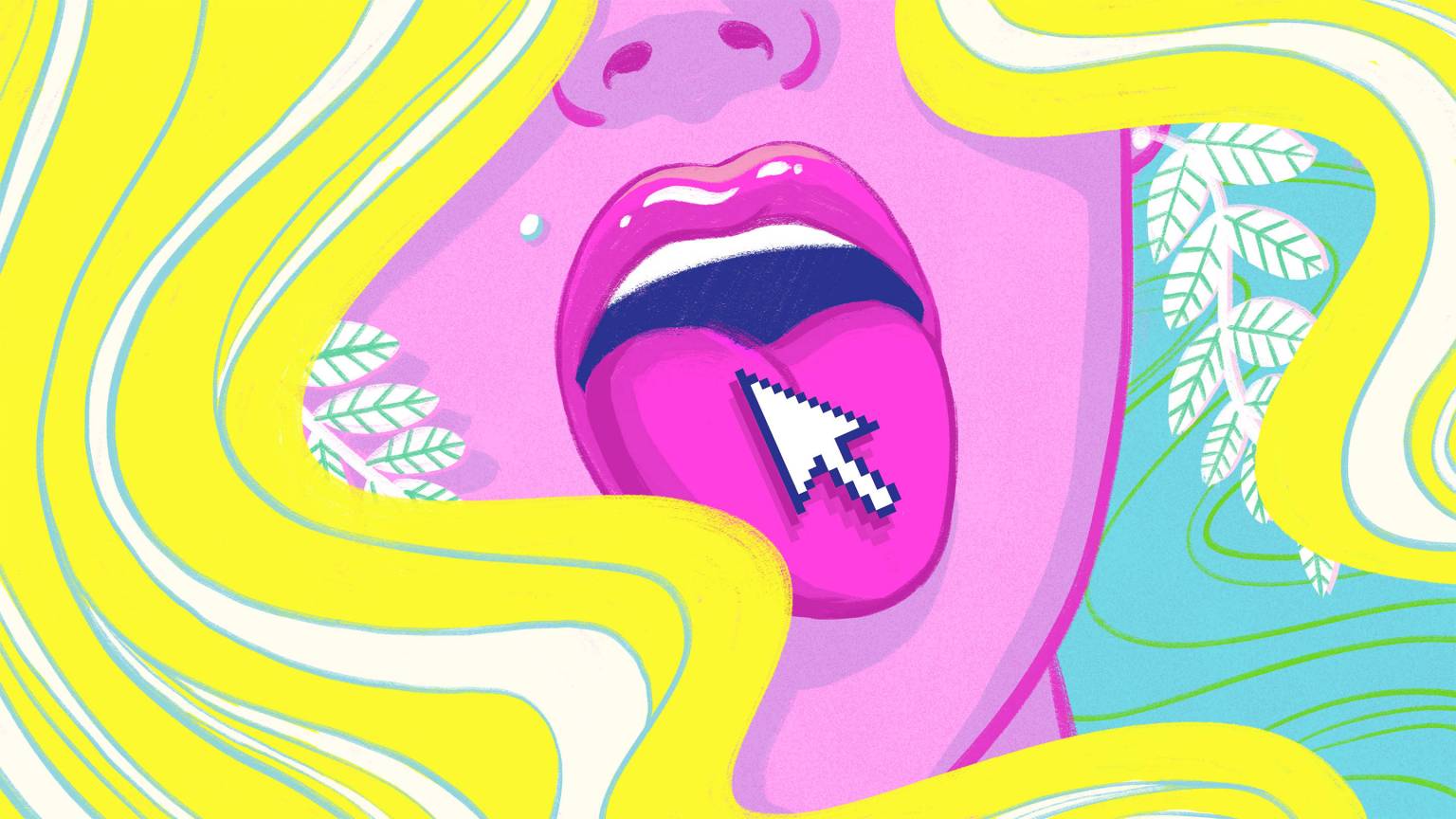
THE DIGITAL FRONTLINE
Darknet markets (DNMs) are sites hosted on the anonymous Tor network. They came to prominence in 2015, when Texan physicist and ex-Eagle Scout Ross Ulbricht was jailed for life for running the illicit bazaar known as the Silk Road. After Ulbricht’s conviction, dozens of imitators sprang up.Their popularity has grown rapidly. The Global Drug Survey 2018, the world’s largest such report, had 130,000 respondents in 2018. Half said they used a DNM in 2017. Almost one in five of these were from the US—a rate that has more than doubled since 2013. MDMA has been these users’ number-one choice in nearly every one of the last five years, with 56 percent saying they scored it online last year.
Pete (name changed at his request), a 25-year-old student from the US West Coast, tells me how a typical DNM deal works: “It’s really simple. You buy bitcoin, download the Tor web browser, go to a market and pick out the substance you want, and then have it delivered to your house in a nondescript envelope.”
I log on to a market and find a US-based vendor offering grams of MDMA for a fraction of the street price. He also sells kilos for $7,000, or $7 per gram. MDMA retails at $100 per gram, and his feedback is stellar. “A lot of people buy in bulk to sell on in smaller amounts,” says Pete. And the risks seem worth it: “I’ve not heard of anybody being busted for buying MDMA domestically through the dark web,” he says.
It’s really simple. You buy bitcoin, download the Tor web browser, go to a market and pick out the substance you want, and then have it delivered to your house in a nondescript envelope.
Klara (name also changed), a midwest student in her 20s, remembers her first Tesla as a life-changing event. She took one at a club she’d prefer not to identify. “I used to get the Orange Teslas with the CP stamp on the back and the glitter. They were so strong. It was so beautiful. It had the euphoria, the love, the openness and relaxation to it.” More than just a buzz, the 200-milligram pill, taken in fractions over the course of a long night, delivered an epiphany of personal growth, she says. “It changed me. I used to be a very angry, confused and upset person. MDMA helped me become more understanding with myself and others. Now I have a lot more patience and love.”
Domestic production of MDMA super-pills has also been noted with a team known as G6 ruling the West Coast, churning out pills with Euro-style doses of 200 milligrams. It’s great business: A kilo costing $7,000 can yield 5,000 pills at 200 milligrams each, which retail for $20 each at street level, or $100,000. Tabletting machines, available online for under $3,000, can produce millions of pills a week.
So if the dark web is increasingly the intermediary of cheap, strong MDMA, where is the drug itself being made? All roads lead to Holland, Europe’s narcostate.

THE DUTCH CONNECTION
“Jail time here is a joke,” a Dutch dealer we’ll call Mario tells me. “Play your cards right, claim to be a victim of some terrifying man, and you’ll do community service.”The MDMA trade has, in recent years, industrialized. The process is fairly simple: The precursor goes into glass flasks at one end of the lab, heat and stirring and multiple chemical reactions follow, and salts are crystallized out at the end of the production line, washed in acetone and sold on to pill-makers, or sold as pure MDMA crystal. As the market has grown, so have the labs.In 2016, the European Monitoring Centre for Drugs and Drug Addiction said some labs have been automated, removing the need for human intervention. A lab was even found with a dark web distribution department attached, as chemists vertically integrate manufacturing, sales and distribution.
The increased production spells disaster for Dutch wildlife, as chemists dump toxic residues in forests, requiring costly cleanup. In Someren, traces of MDMA have been found in corn growing near dump sites. Over 200 such sites were identified last year, the telltale blue barrels and 1,000-liter white PVC tanks leaking into the soil and across paths used by schoolchildren. Each site costs around 20,000 euro to decontaminate.
In Someren, traces of MDMA have been found in corn growing near dump sites.
Retail bulk prices have dropped tenfold in a decade, and yet the drug remains profitable. Mario sells at a 100 percent markup but charges under E3,000 per kilo. He buys direct from a lab—which means he is paying around 1,500 euro per kilo—on which the labs are making a profit. The logic is there if you look closely. The city of Rotterdam is one of the world’s busiest seaports. In December 2018, 4,000 kilograms of cocaine imported by the Calabrian mafia, or ‘Ndrangheta, was found there, demonstrating the port’s importance to narcos worldwide.Ingredients for MDMA synthesis also enter the country there. 4.25 million shipping containers arrive annually, and they can’t all be opened and checked. Inside some of the containers that swing like toys from the cranes at the rate of 500 per hour, are the blue, black-capped barrels and the white 1,000-liter tanks that will soon be leaking foul byproducts into a quiet forest floor.
The dominant source for the ingredients is China. Uncontrolled chemical traders there are shipping out boatloads of para-legal MDMA precursors to anyone who asks. So I did.
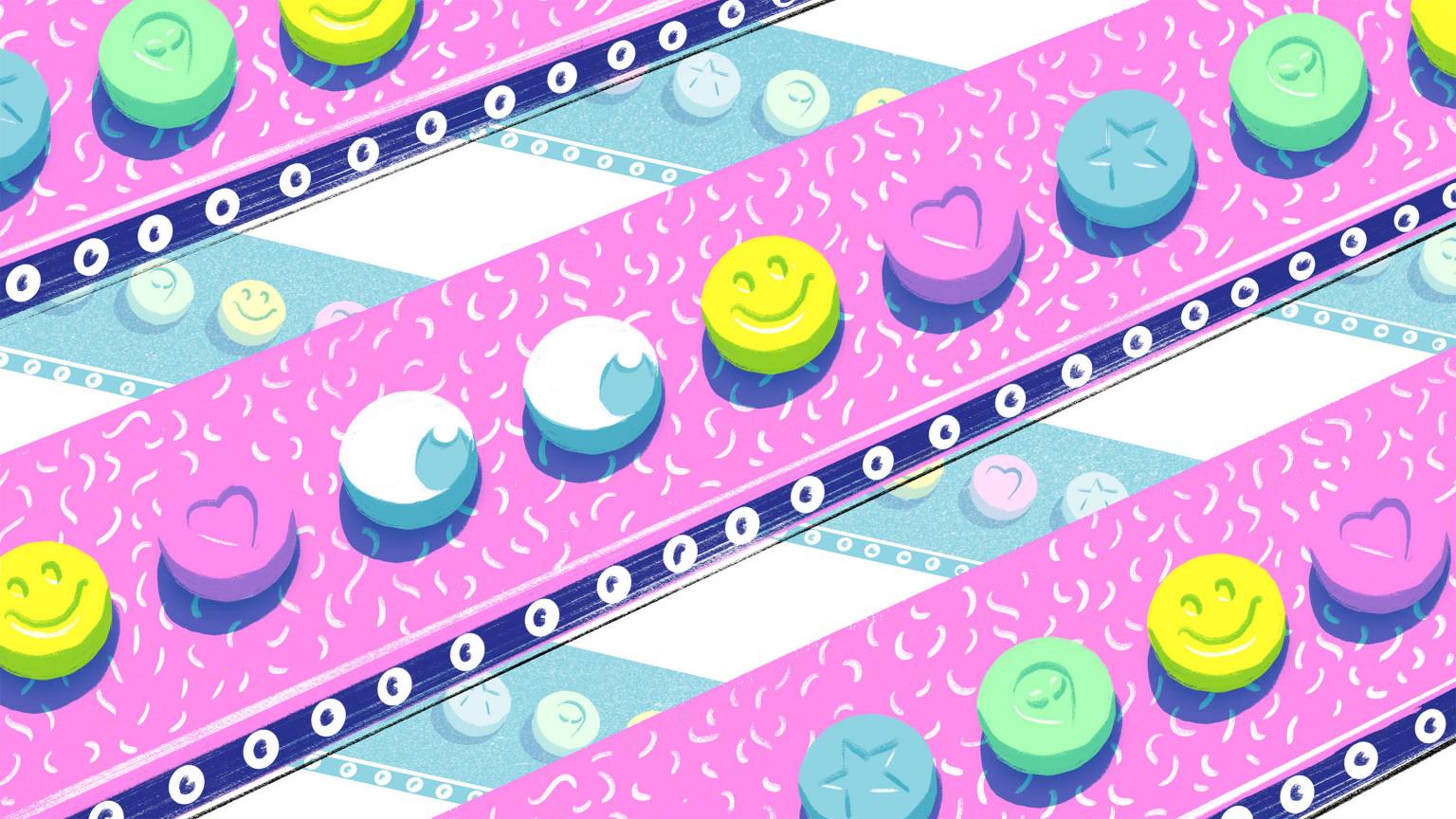
A SHANGHAI STING
Before we get into my trip to Shanghai, and my brief charade as a high-rolling illicit drug manufacturer, a little more background.In 2008, MDMA disappeared worldwide: Seizures of the drug dropped to 25 percent of previous averages. At that time, the drug cost E30,000-40,000 per kilogram. Today, it can cost as little as E3,000 per kilo in producer countries. Why did supplies vanish, only to reappear in in such dramatic abundance? How did the price drop tenfold?
In January 2009, at trade talks in Brussels, the then EU Commission President Jose Manuel Barroso and the Chinese prime minister Wen Jiabao signed an agreement to monitor drug precursors produced in China and used by clandestine chemists worldwide. They pledged to monitor the Chinese chemical industry more closely and to prevent the illicit diversion of dozens of chemicals from legitimate industrial uses. The agreement came into force in July 2009, and marked a new era in co-operation between the Chinese and the EU.
During research for my book, Drugs Unlimited, I discovered the unintended consequences of the UN’s safrole burn and the precursor clampdown: First, a new wave of drugs came to market—stimulants in the main, produced in China. Next, new methods of making MDMA emerged, prompting a resurgent global market connected to the dance music scene.
You want 7,500 kilograms. Our capacity is over 1,000 tons annually.
PMK-glycidate was found in a lab in the Netherlands in 2011, along with instructions for its conversion into PMK. In March 2019, the United Nations announced that PMK-G and a related chemical were to be added to the Convention against Illicit Traffic in Narcotic Drugs and Psychotropic Substances of 1988. In March 2019, the United Nations added PMK-G and a related chemical to the Convention against Illicit Traffic in Narcotic Drugs and Psychotropic Substances of 1988. It is now illegal to import or buy without a license. But as we shall hear, the move has deterred nobody—and, in fact, has simply prompted greater innovation.I needed to prove my hypothesis that China had entered the Molly game, and the only way to do that was to go undercover.
In 2013, I had met a chemist online who confirmed first-hand what I had discovered: China had entered the MDMA industry, allowing the trade to scale up to unprecedented, industrialized levels. “In 2013, our lab switched to ethyl-PMK glycidate,” he wrote. “This was an unwatched precursor—a waxy solid—that we were able to source from China at a very competitive price. The cost of production was just under one euro per gram.”
This chemist sent me the details of his new synthesis and I verified its feasibility with Guy Jones, science lead at the Loop, the UK’s award-winning festival drug-testers. It wasn’t just feasible, said Jones; it was beautiful. “It achieves complex molecular changes in a single, concerted step. It’s like watching a solar system of planets align.”The price of MDMA plummeted that year—and death tolls steadily climbed in the UK, the EU and US as people who had for years had no real Ecstasy were suddenly exposed to cheap, high-dosed pills, and pill-makers began a kind of arms race to press the strongest pills and so capture market share. I decided to set up a sting operation.
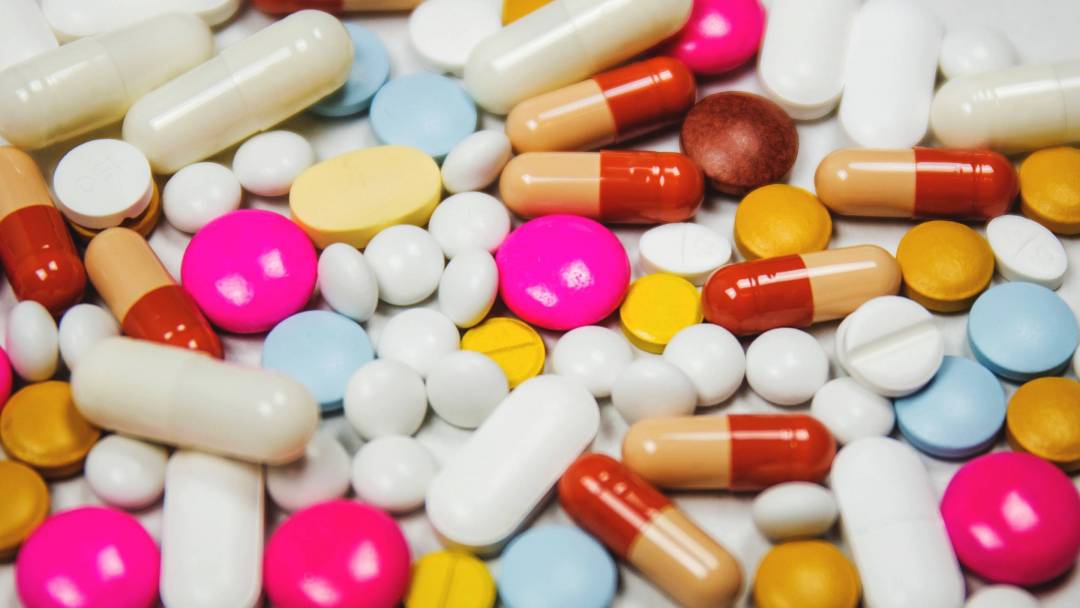
Should All Drugs—Heroin Included—be Legalized?
The War on Drugs leads Playboy the question it all
When I asked the lab if they could ship me 7,500 kilograms of it, I received a short email from “Janet.”
“No problem.”
After six months of careful work, I flew to Shanghai to meet Janet and try to get her to admit, on hidden camera, that she knew the chemicals her firm sells would be used to make illegal drugs. She thought I wanted to discuss a price cut. There was some stilted chat, and then we talked business.
“You want 7,500 kilograms,” she said. “Our capacity is over 1,000 tons annually.” I was staggered. This lab supplied enough precursors to produce half a million kilos of MDMA. 3.75 billion recreational doses. There are many, many more labs like it.“We sent five tons to Portugal last week. We sent to Russia 90 tons just this year. There is no problem,” she said brightly.
“Janet—I must say something to you in confidence,” I said, heart pounding. “We need this material shipped to Schiphol, or Rotterdam, by air, rather than by boat. Can you do that?”
I knew she would refuse. Smuggling at this scale goes by sea, period. We both knew it.
“That is not possible,” she said.
“Why?” I asked. I didn’t blink, smile or look away. She flinched.
“This is a sensitive issue, this material, especially in the Netherlands.”
“Is it because you know that we plan to make MDMA with it?” I asked.
She stared me down. “Yes. We know,” she said, clipped. “So it must be by sea. We do not have contacts in airports—only seaports.”
My stomach leapt as each word left her lips. Case closed. We made an excuse, pretending to argue among ourselves, and left. The deal I was striking could have easily flooded the US with even more MDMA.
I heard from Janet again a few weeks after we met. She was still keen to strike for the deal, and her company continues to trade today.

THE COMEDOWN & THE UPSIDE
Which brings us back west, and to the ever-growing dance-festival culture, and to the challenge of reducing risk in the face of all this abundance and potency. MDMA is not, relatively speaking, a dangerous drug—if you know the dose and source and how to behave when you’re taking it. Millions of people have used it for decades, and the proportion of deaths to users is lower than that of commonly prescribed tranquilizers, such as Xanax, or even alcohol: Six people a day die from acute alcohol poisoning in the US.“Every single death associated with MDMA is because of a lack of regulation, either of the product or the premises,” says British ex-undercover policeman Neil Woods, who battled frontline drug dealers for 14 years in the UK. After sending dealers and addicts to jail for a total of over 1,000 years, Woods realized the war on drugs did nothing but enrich criminals and marginalize vulnerable people. He now lobbies for full drug legalization as a board member of US lobby group Law Enforcement Action Partnership.
He says the US is in denial about the extent of its Molly use, and the changes in music culture, crime and chemistry. “Laws on event promotion do more harm than good,” says Woods. “Stronger, cheaper drugs available to more users, more cheaply, without education, means less safety. Add to this the total mainstreaming of EDM and MDMA use in the US, and we have a perfect storm brewing.”
US legislation once known as the RAVE Act, now the Illicit Drug Anti-Proliferation Act, means promoters can be fined $250,000 all the way up to double the gross ticket sales for knowingly and “intentionally profiting” from drug use during events. Perversely, this means drug-testing services and drug information tents are often barred at the biggest events—exactly the places they are most needed.
“Drug-checking allows users to mitigate these policy-created risks for themselves, and to make healthier, more informed choices about what they are putting in their bodies,” says Mitchell Gomez, CEO of DanceSafe. Indeed, massive, multiple-day festivals amplify the risks of overheating, tachycardia and dehydration that can be caused by MDMA simply due to crowd size and temperature. Major EDM events are more mosh pit than dance floor.
Some parents who have lost their children at EDM events are suing organizers. Live Nation, whose half-year revenues in 2018 were $4.35 billion, is facing multiple US lawsuits after repeated deaths at its events in the last few years. The firm stands accused of negligence and wrongful death in the case of 22-year-old Roxanne Ngo, who died after taking MDMA at the 2016 HARD festival in California. The 2017 lawsuit, filed at San Bernardino court, claims the four medical tents provided were insufficient for the 147,000 attendees, and further alleges that Live Nation failed to provide enough water.In total, three people died at HARD 2016, all attributed to MDMA overdoses. Deaths from the drug are often more nuanced, involving overheating while dancing on drugs in large crowds. Simple MDMA toxicity overdoses are possible, but the most common form of death in Molly users is that young people, hyped up on music and atmosphere, in poorly ventilated or crowded spaces, drink too little water, dance too hard for too long, then overheat and die.
Every single death associated with MDMA is because of a lack of regulation, either of the product or the premises.
It’s clear that radical cultural and legal change is required. And some of the most unexpected voices for reform are coming from parents who have lost their children to MDMA.Ray Lakeman, of the Isle of Man, lost both of his sons, Torin and Jacques, 19 and 20, on the same night in 2014. They bought MDMA from the darkweb and went to a football game in Manchester. There, they took the drug in a hotel and were found dead a few days later. The cause of death was MDMA toxicity: an overdose. They had never used MDMA in crystal form before, only as pressed pills, and were unaware of dose.
“I don't want my boys to be remembered for taking drugs. They were talented, sensitive and creative,” says Lakeman. “I didn’t want them taking drugs. I don’t want other people’s children taking drugs. But being pragmatic, I think MDMA should be legalized.”
“These drugs can be made safer,” he stresses. “It should be regulated, with advice given on dosage and warnings.”In the UK, volunteers for the the Loop analyze drugs for contents and potency and offer informal drugs counseling sessions. It’s a bizarre scene to witness: In a festival tent guarded by police officers, drug users enter a de facto decriminalized space and hand their drugs to a counselor, who sends them back-of-house to be tested. Behind the scenes, chemists crush pills and test a crumb with a drop of color-changing reagent. If that test shows that just MDMA is present, quantitative tests follow to establish the dose. Users are presented with information and individualized counseling that allows them to judge whether to take the rest of their supplies. If a sample does not contain any MDMA, it is submitted to spectral analysis and its contents are cross-checked against a database of other substances and identified.
No one has ever died at an event where Loop staff operate. Their methods change minds and save lives. At one festival, its services cut drug-related hospitalizations year-on-year by 95 percent.
One UK festival-goer told me that after having his high-dose pills tested and talking to Loop staff, he halved his dose and dialed in his hydration habits—a pint of water per hour of dancing, or half a pint if not. (Overconsumption of water poses its own threat: Electrolyte imbalance can also be fatal.) “It changed the way I take drugs, for the better,” he says.

Your Taste for Drugs is Influenced by Your Tastes in Music
A new study reveals a connection between listening to hip-hop music and trying molly
Steve Rolles, of the UK based drug-law reform group Transform, is writing a book arguing for recreational legalization of MDMA, cocaine and other stimulants. Rolles has pioneering form in this area: In 2012, he advised the government of Uruguay, and more recently, the Canadian government, on the best way to regulate legal sales of cannabis.“As EDM and drug culture are inextricably linked, responsible promoters need to plan for the likelihood of customers’ MDMA consumption, regardless of what the RAVE Act states. Some do this, but not enough,” he says. “They should provide temperature-controlled environments for all, not just VIPs, with a tripling of free water provision and greater investment in shaded areas.”
Where the cannabis sector has led, MDMA may follow. Rick Doblin founded campaigning group the Multidisciplinary Association for Psychedelic Studies 30 years ago in a bid to change US law on MDMA. In November 2018, MAPS officially began Phase 3 Trials of MDMA-assisted psychotherapy for veterans and others with post-traumatic stress disorder. Doblin anticipates the FDA will approve medical use of MDMA by 2021, with legalization for recreational purposes not long after. “The best policy outcome is a system of licensed legalization, of regulation and control of non-medical uses,” he says.
There has been one immediate consequence of the international banning of the precursor I had planned to buy: Chemists tell me they have started to import and use yet another chemical, which is again legal, to make MDMA. It is a sweet, floral scent used in perfume manufacture and everyday cleaning products, and is just a few short reactions away from MDMA. I show an image of it to Guy Jones of the Loop, over a Skype connection, and he laughs. “Well, the UN have left the door wide open on that one,” he says. “That’s basically the whole molecule.”Through the eyes of a chemist, or a criminal, the world is filled with infinite possibilities. I search online, and within five minutes am exchanging prices and details with a chemistry lab near Shanghai over a Signal connection.
So what does the future hold? We re-legalized alcohol in the 1930s. We are doing it now with cannabis. I believe it’s time to regulate and control the production and sale of certain stimulants, beginning with MDMA. Until we have a regulated MDMA market, drug-checking, harm-reduction services and proper welfare tents staffed by medical professionals at EDM events and festivals should be a licensing requirement, not an extra.
No good business kills its customers. Even drug dealers know that.




